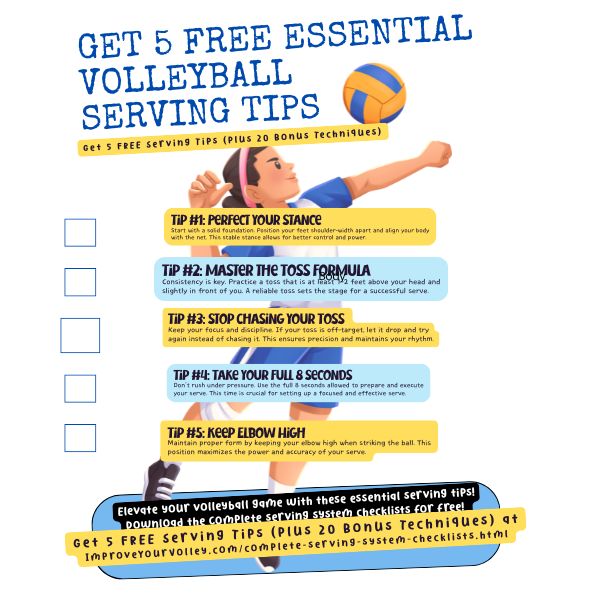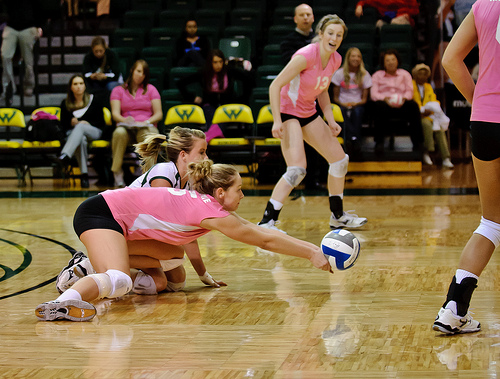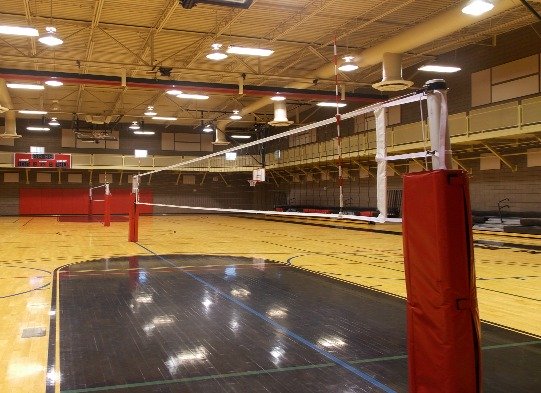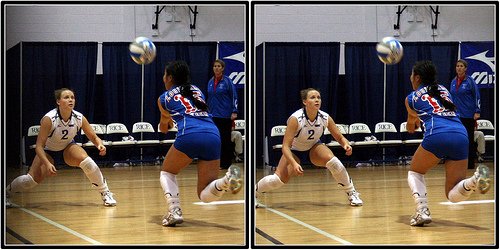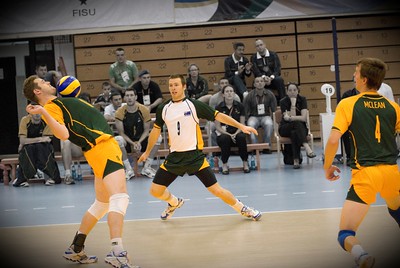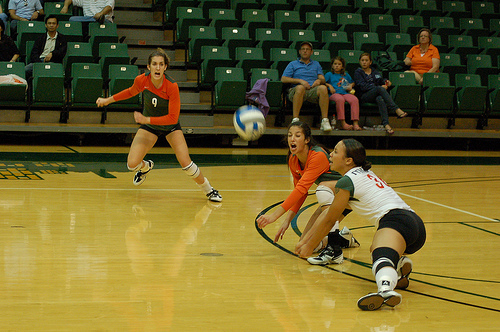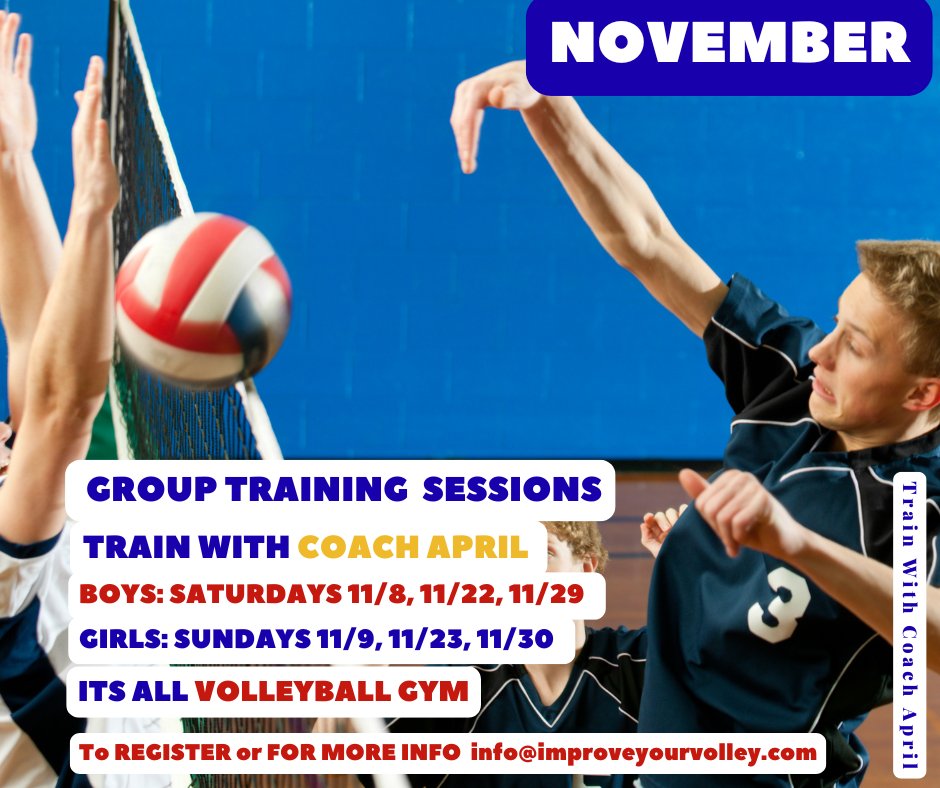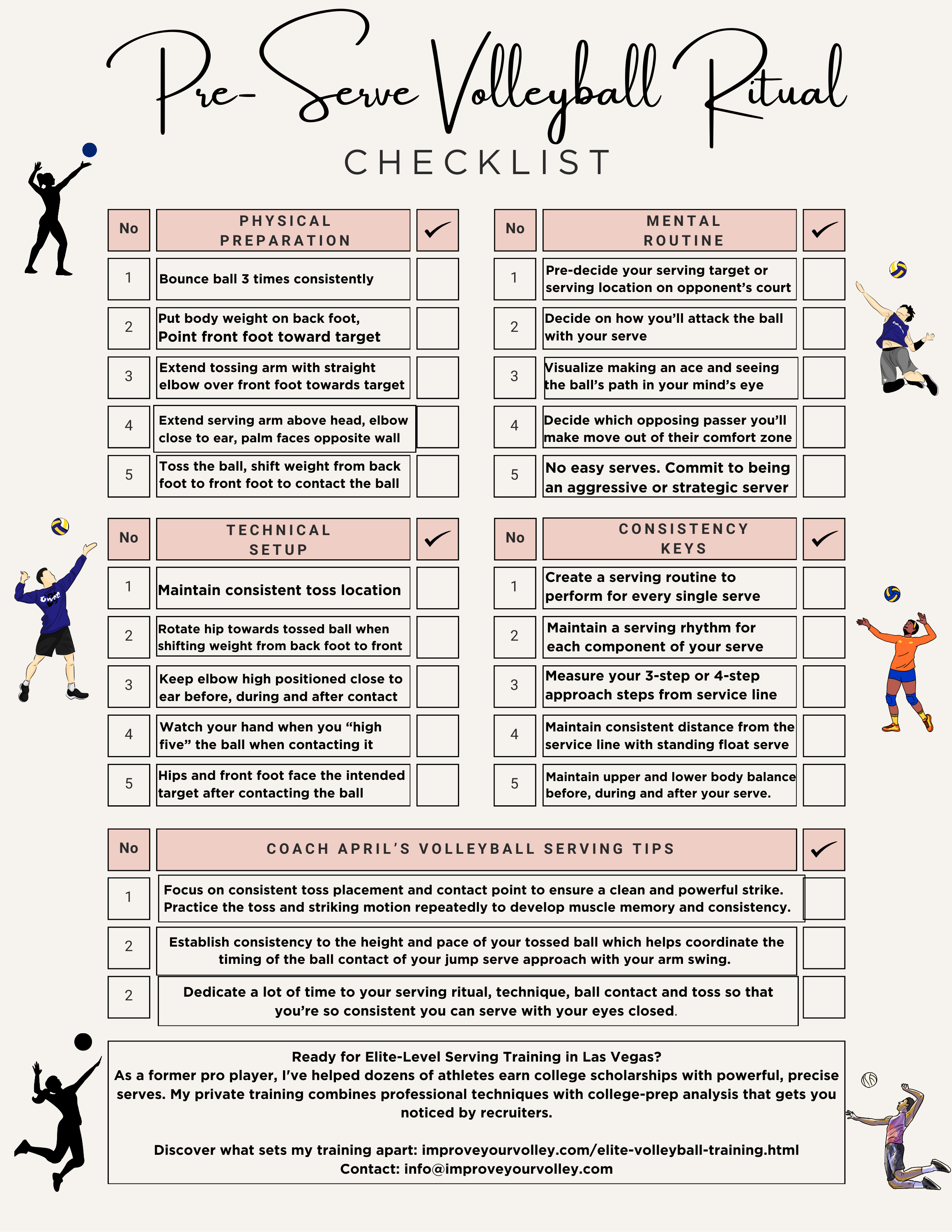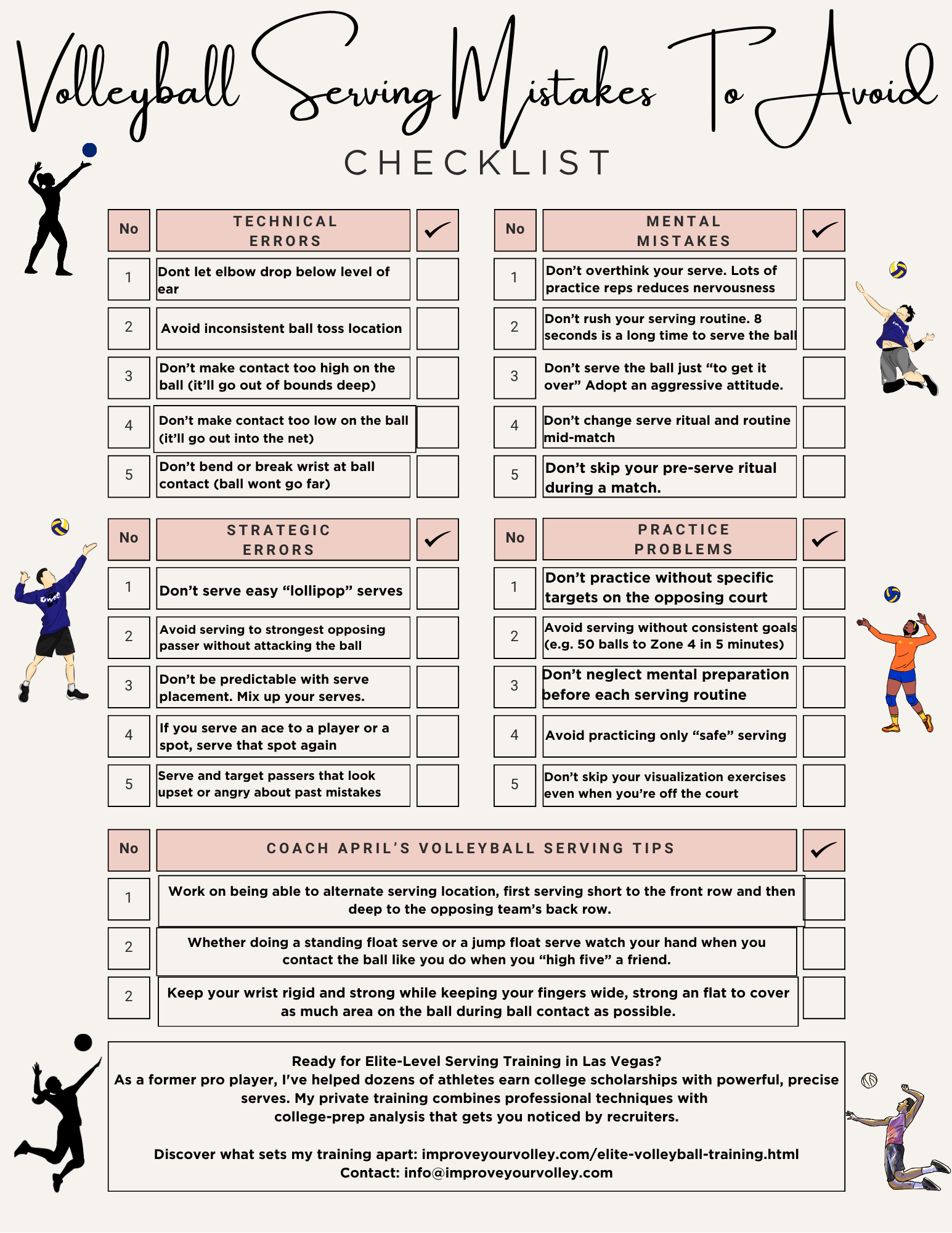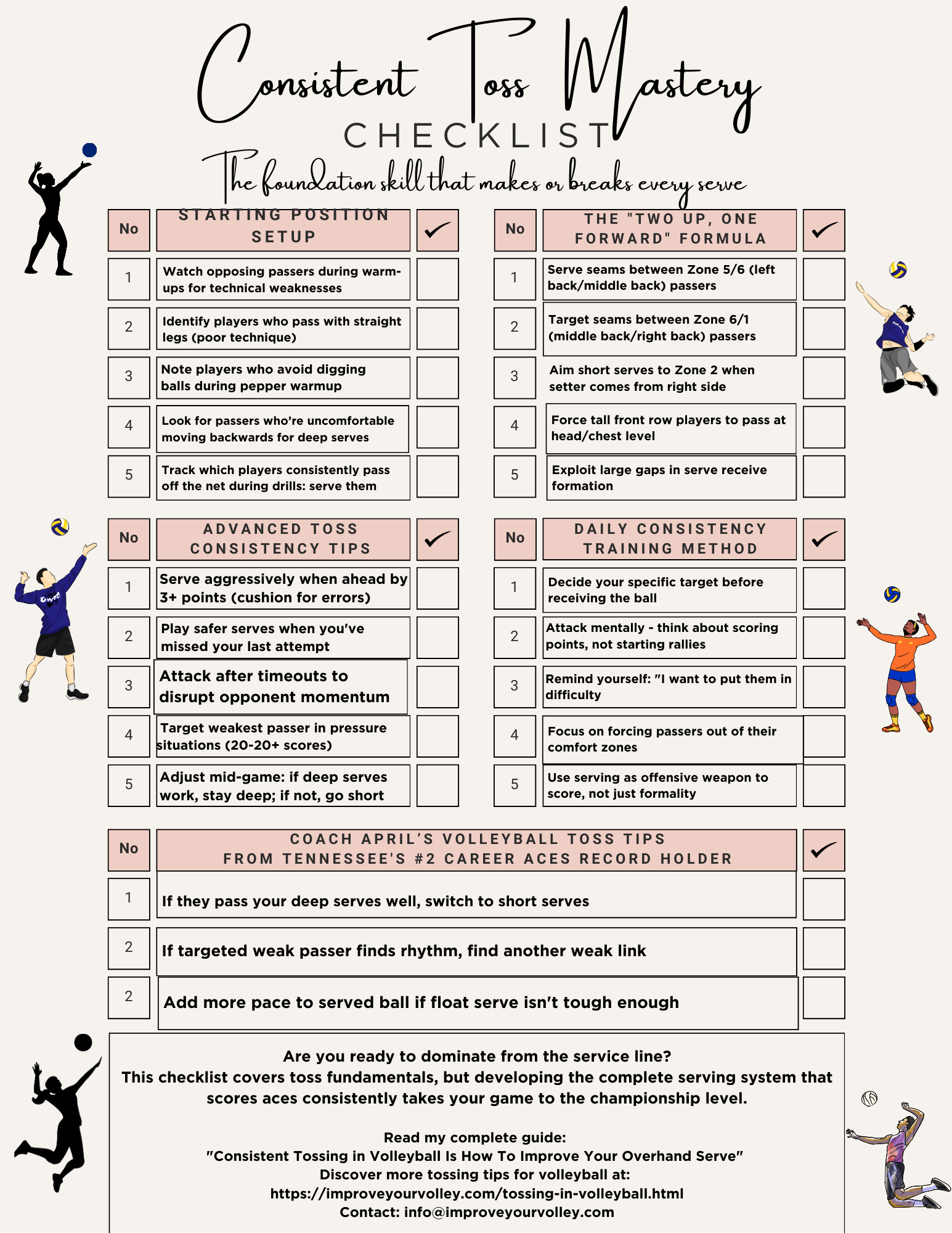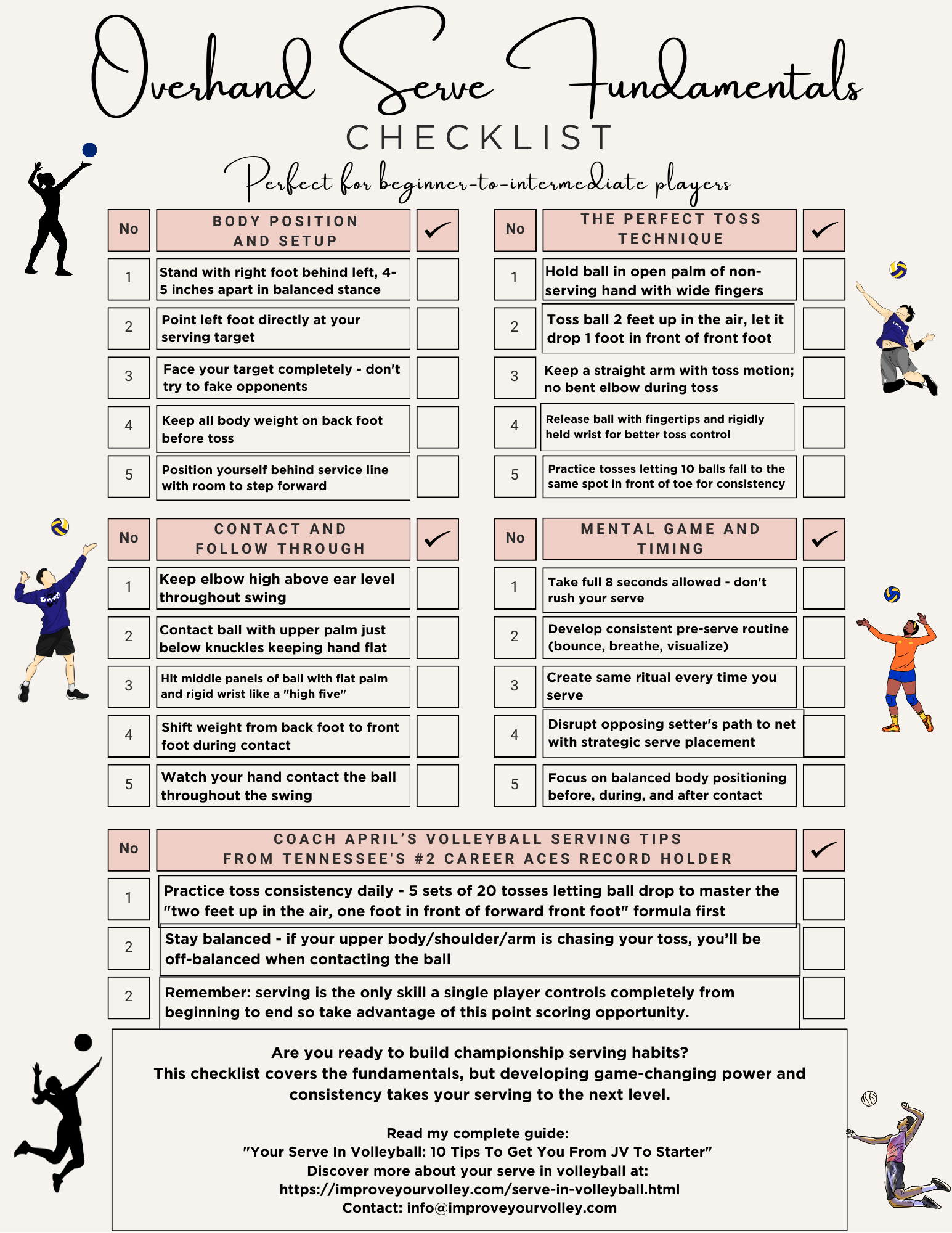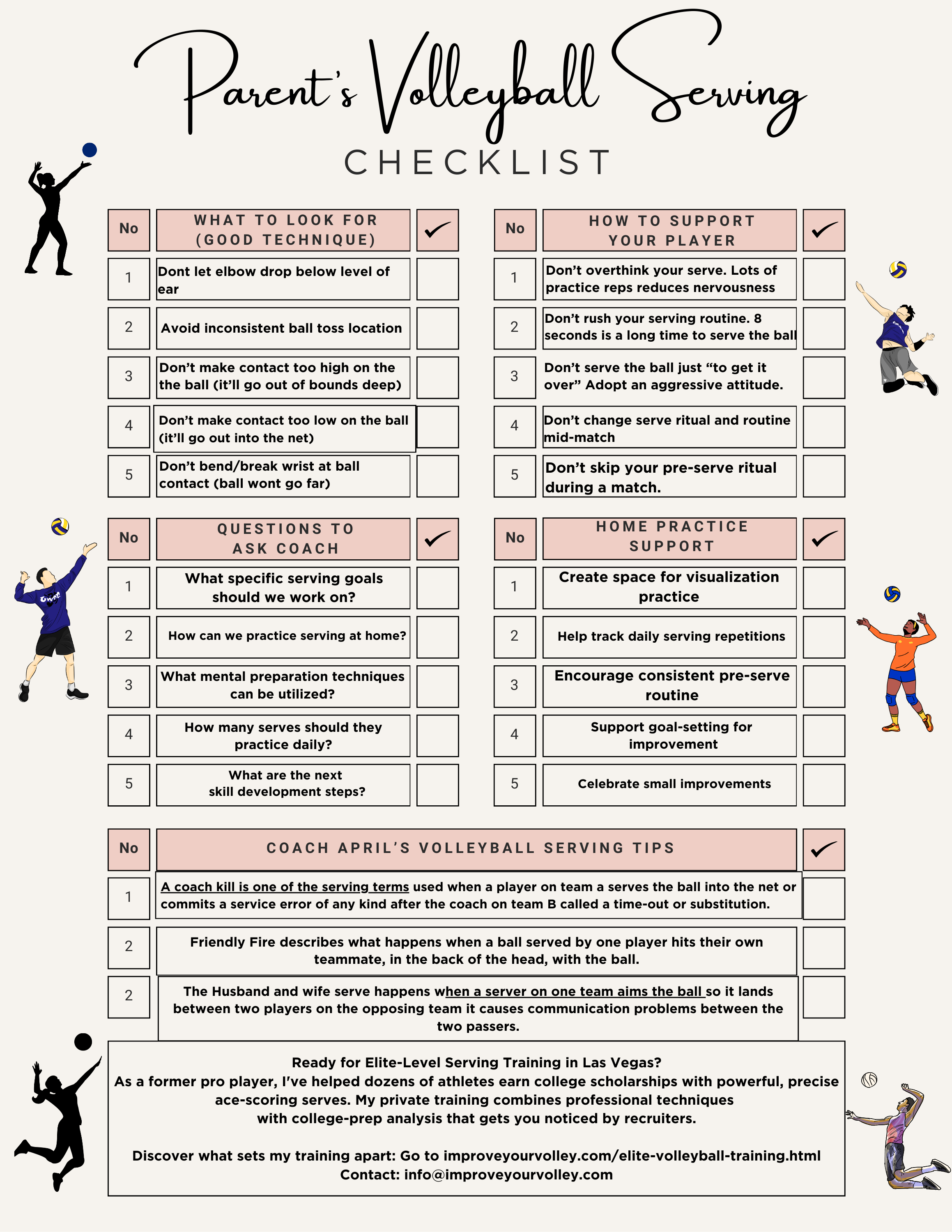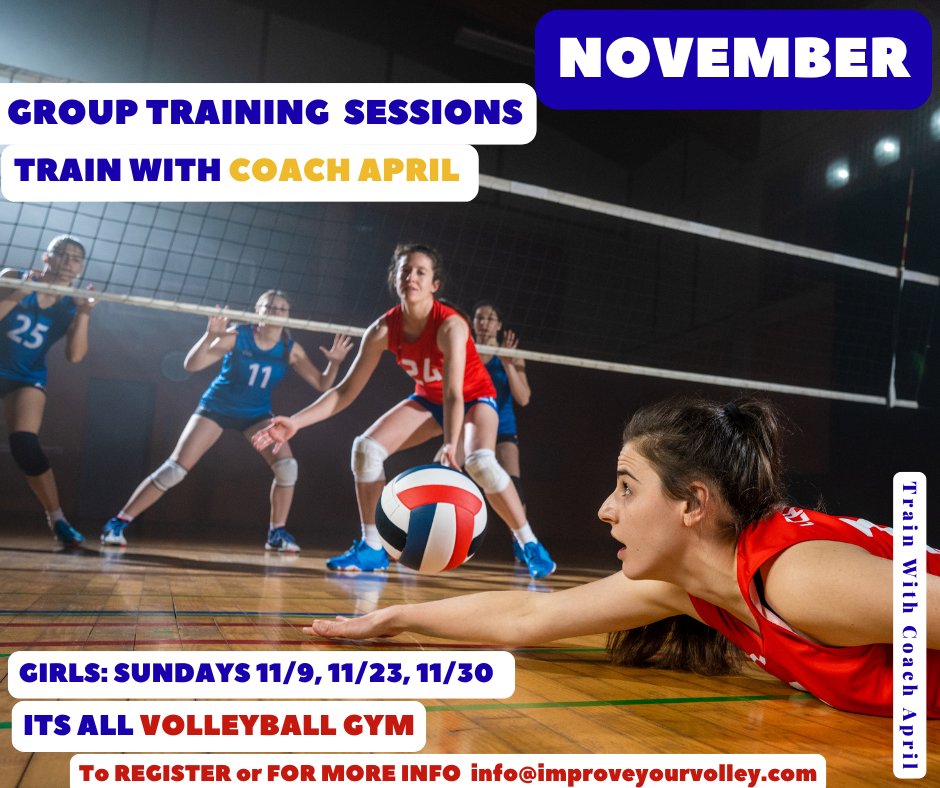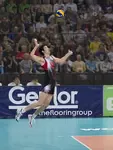- Improve Your Volleyball with Coach April
- Words Used in Volleyball
- Volleyball Terms and Definitions Puzzles
Puzzle Fun With Volleyball Terms and Definitions For Errors And Faults
Learn volleyball terms and definitions for common errors, faults and violations with my puzzles! Have fun, test your knowledge while raising your volleyball IQ.
One thing about volleyball, just like any sport, it has its own language, a lingo that players know, which has a unique set of volleyball mistake slang terms and expressions.
As a player or fan or like me, a coach, understanding these terms can help you communicate more effectively with your teammates as well as follow the game more easily.
Keep reading while I explore some of the most common volleyball slang words used to describe the mistakes, different types of errors and poor plays committed on the court in the puzzles below.
From "shanks" to "facials," I'll cover the informal expressions that players use to talk about errors and mishaps during a game.
Take My True Or False Quiz With Volleyball Terms and Definitions For Errors And Faults
1. A "shank" is a perfectly executed pass.
a. true b. false
2. A "six-pack" refers to a player getting hit in the face with the ball.
a. true b. false
3. "In the net" means the ball hits the net during a serve or attack.
a. true b. false
4. A "facial" is a type of spike.
a. true b. false
5. "Out of system" means the team is in an ideal offensive position.
a. true b. false
6. A "chester" occurs when a player gets hit in the chest with the ball.
a. true b. false
7. A "dig" is a type of attack.
a. true b. false
8. A "setter" is primarily responsible for spiking the ball.
a. true b. false
9. A "block" is a defensive move to stop an attack.
a. true b. false
10. "Match point" is the final point of a game.
a. true b. false
Answers To My True Or False Quiz With Volleyball Terms and Definitions For Errors And Faults
**Answers:**
1. False
2. False
3. True
4. False
5. False
6. True
7. False
8. False
9. True
10. True
My Multiple Choice Quiz With Volleyball Terms and Definitions For Errors And Faults
1. What does a "shank" refer to in volleyball?
a) A perfect pass
b) A bad pass
c) A type of block
d) A powerful serve
2. What does "out of system" mean?
a) The team is in a strong offensive position
b) The team is not in an ideal position to attack
c) The setter is ready to set the ball
d) The team has successfully executed a block
3. What body part is involved in a "facial"?
a) Chest
b) Knee
c) Face
d) Foot
4. What does a "six-pack" usually involve?
a) Drinking six beverages
b) Scoring six points in a row
c) Getting hit in the chest/face with the ball
d) Successfully blocking six attacks
5. What is a "chester" in volleyball?
a) A type of serve
b) Getting hit in the chest with the ball
c) A successful dig
d) A type of set
6. What is the primary role of a "setter"?
a) To spike the ball
b) To dig the ball
c) To block attacks
d) To set up attacks
7. What is a "dig" in volleyball?
a) An attack
b) A type of serve
c) A defensive play to save a hard-driven ball
d) A block
8. What does "in the net" mean?
a) The ball landed out of bounds
b) The ball hit the net during a serve or attack
c) The ball was successfully blocked
d) The ball hit the ceiling
9. What is a "block" in volleyball?
a) An offensive move to score a point
b) A defensive move to stop an attack
c) A type of serve
d) A type of dig
10. What does "match point" signify?
a) The start of a match
b) The middle of a match
c) The final point of a match
d) A tie score
My Fill In The Blank Quiz With Volleyball Terms and Definitions For Errors And Faults
1. A ________ is a poorly executed pass that often goes off target.
2. When a player gets hit in the face with the ball, it's sometimes called a ________.
3. A ________ is a player primarily responsible for setting up attacks for their teammates.
4. If the ball hits the net during a serve or attack, it's called "in the ________."
5. A ________ is a defensive move used to stop an attack from the opposing team.
6. A ________ occurs when a player gets hit in the chest with the ball.
7. When a team is not in an ideal position to attack, they are considered "out of ________."
8. A ________ is the final point of a match.
9. A ________ is a defensive play used to save a hard-driven ball.
10. A playful tradition where a player owes a teammate a beverage after getting hit by the ball is called a ________.
**Answers:**
1. shank
2. facial
3. setter
4. net
5. block
6. chester
7. system
8. match point
9. dig
10. six-pack
So To Sum Everything Up...
Volleyball slang words for describing mistakes add color and personality to the game.
While mistakes can be frustrating, it's important for players to remember to shake off the errors and focus on the next play.
By understanding and using these slang terms, you'll be able to follow the game more easily and feel more connected to the volleyball community.
So the next time you hear someone call out "Shank!" or "Out of system," you'll know exactly what they mean.
Do You Follow Me on Pinterest?
Follow me on Pinterest Volleybragswag to improve your game even faster!
I share alot of individual, partner and easy-to-do volleyball serving drills we do in class with my followers.
Many of these volleyball practice drills you can do at home by yourself or try at your next practice with your teammates.
If you're a B team or JV player trying to make varsity next year...your goal should be to complete 1000 reps a day of at least three of the basic skills on your own...volleyball passing, serving and setting should be at the top of the list.
If your athlete struggles with consistent serve receive, gets subbed out, or is overlooked for playing time—this is the fix you’ve been looking for.

Struggling with passing consistency?
I help talented passers tired of getting pulled from games because of inconsistent serve receive skills BUILD passing confidence without expensive private lessons using the same 3-step system that's helped dozens of my athletes get recruited.
Download my eBook for $17.99 and start building the passing confidence that keeps you on the court—and gets you seen by college coaches.
From Lady Vol to Legend: Coach April Produces Powerful Passionate Players...is that you?
What Are You Looking For?
Click to Download Your Pre Serving Ritual Mastery Checklist pdf:
🎯Volleyball Pre Serving Ritual Guide -
Players! Learn How To Transform Your Serve from Weak to Weapon
Click to Download Your Parent's Volleyball Serving Checklist pdf
🎯Parent's Volleyball Serving Checklist Guide
Parents! Help Your Player Develop Championship Serves (Even If You've Never Played)
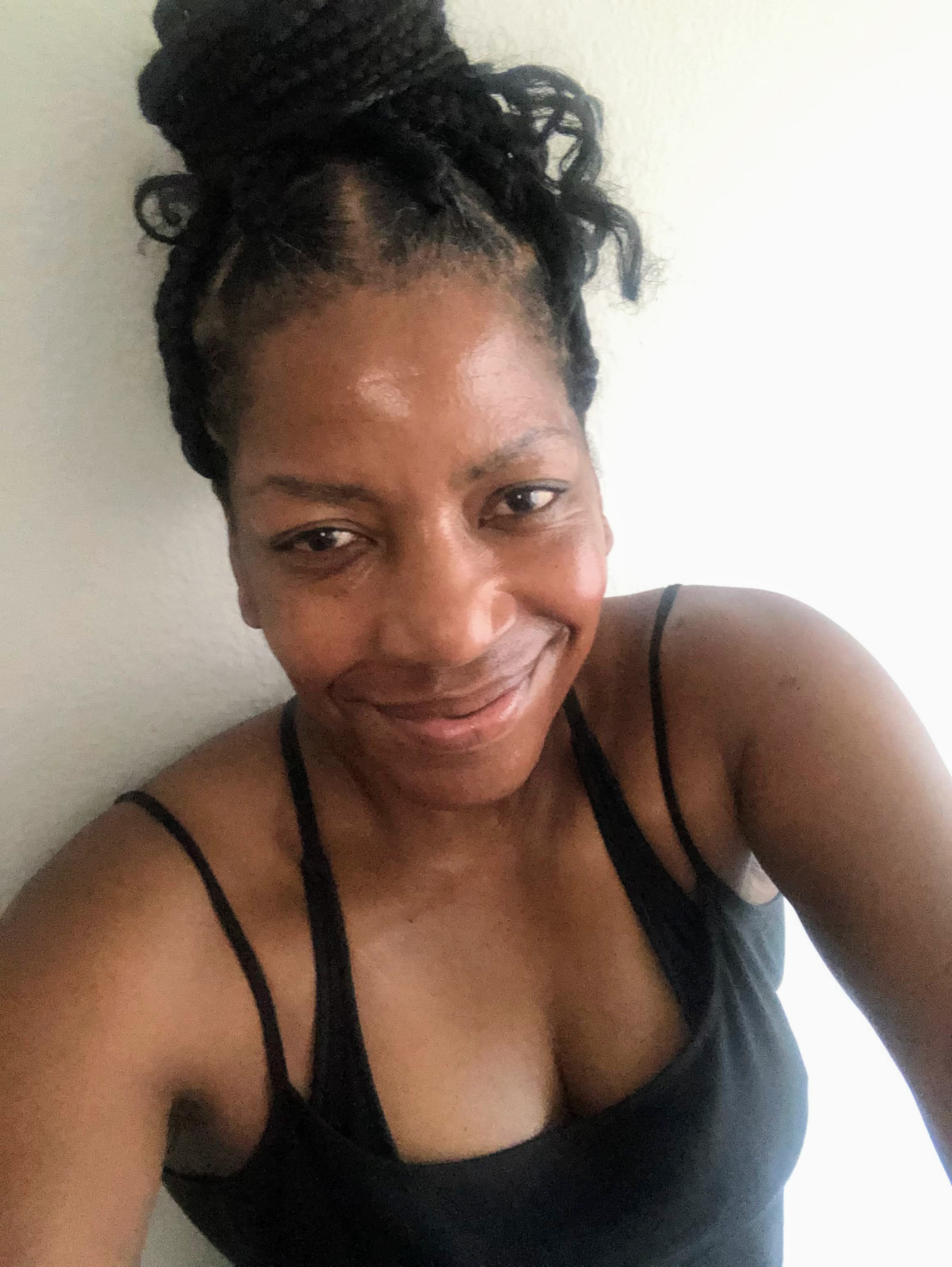
Hi there!
Thanks for stopping by. Hope you learned something today that will help you reach your volleyball goals.
Be sure to subscribe to my email newsletter so you can learn more each week!
Stay strong! Stay motivated!
-Coach April

SUSCRIBE to my email newsletter below!
 Click to learn more about the weekly volleyball classes and clinics or email info@imrpoveyourvolley.com for information
Click to learn more about the weekly volleyball classes and clinics or email info@imrpoveyourvolley.com for informationCongratulations to my seven Boys-18s Vegas Volley club players who played in two state championship finals yesterday, the 3A and 5A State champinship finals at Sunrise Mountain High School.
TOURNAMENT CHAMPIONS!
A-1 Vegas Volley VBC
In It To Win It Tournament
May 2 - 4, 2025 Tournament
Gold Medalists
18s Premier Division
Vegas Volleyball's Unsung Heroes: Celebrating Moms with Peace Love Volleyball Shirts
Ready to energize your volleyball mom journey?
Subscribe to my 'Producing Powerful Passionate Peaceful Players' email list above on ImproveYourVolley.com.
You'll receive energy-boosting tips, exclusive insights from me, Coach April Chapple on maintaining momentum in volleyball.
Let's power up the Vegas volleyball scene together!
Recent Articles
-
Use A Jump Float Serve To Create Power For An Ace Or To Start A Rally
Dec 31, 25 09:31 PM
Use the overhand jump float serve to generate a powerful serve that starts a rally after the ref blows the whistle for the player behind the service line. -
Types of Volleyball Serves What's A Float, Jump Float, Spin, Jump Spin
Dec 31, 25 09:13 PM
What're the types of volleyball serves like the standing float serve, the jump float where you add spike approach footwork and the topspin and jump spin serves. -
Overhand Jump Serve Volleyball Tips To Score Many More Points and Aces
Dec 31, 25 09:09 PM
My "Coach April Overhand Jump Serve Volleyball Tips" designed to help you increase your serving accuracy, power and the ability to serve more aces in volleyball.
